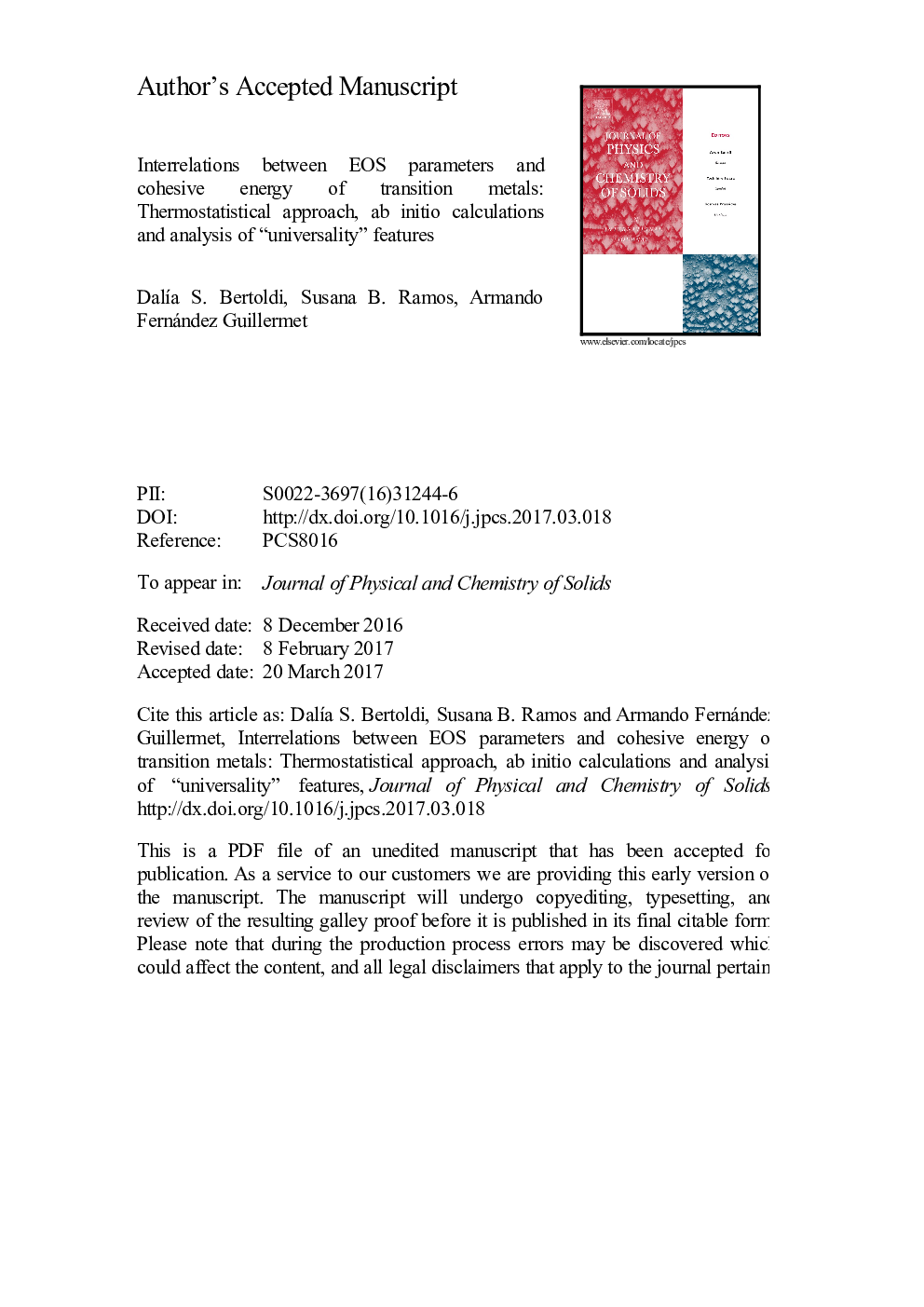| کد مقاله | کد نشریه | سال انتشار | مقاله انگلیسی | نسخه تمام متن |
|---|---|---|---|---|
| 5447509 | 1511499 | 2017 | 17 صفحه PDF | دانلود رایگان |
عنوان انگلیسی مقاله ISI
Interrelations between EOS parameters and cohesive energy of transition metals: Thermostatistical approach, ab initio calculations and analysis of “universality” features
دانلود مقاله + سفارش ترجمه
دانلود مقاله ISI انگلیسی
رایگان برای ایرانیان
کلمات کلیدی
موضوعات مرتبط
مهندسی و علوم پایه
مهندسی مواد
مواد الکترونیکی، نوری و مغناطیسی
پیش نمایش صفحه اول مقاله

چکیده انگلیسی
We present a theoretical analysis of the equation of state (EOS) of metals using a quasi-harmonic Einstein model with a dimensionless cohesive energy versus distance function (F(z)) involving the Wigner-Seitz radius and a material-dependent scaling length, as suggested in classical works by Rose, Ferrante, Smith and collaborators. Using this model, and “universal” values for the function and its first and second derivatives at the equilibrium distance (z=0), three general interrelations between EOS parameters and the cohesive energy are obtained. The first correlation involves the bulk modulus, and the second, the thermal expansion coefficient. In order to test these results an extensive database is developed, which involves available experimental data, and results of current ab initio density-functional-theory calculations using the VASP code. In particular, the 0Â K values for volume, bulk modulus, its pressure derivative, and the cohesive energy of 27 elements belonging to the first (Sc, Ti, V, Cr, Fe, Co, Ni, Cu, Zn), second (Y, Zr, Nb, Mo, Tc, Ru, Rh, Pd, Ag, Cd) and third (Hf, Ta, W, Re, Os, Ir, Pt, Au) transition row of the Periodic Table are calculated ab initio and used to test the present results. The third correlation obtained, allows an evaluation of the third derivative of F(z) at z=0 for the current elements. With this new information, a discussion is presented of the possibility of finding a “universal” F(z) versus z function able to account accurately for the pressure derivative of the bulk modulus of the transition elements.
ناشر
Database: Elsevier - ScienceDirect (ساینس دایرکت)
Journal: Journal of Physics and Chemistry of Solids - Volume 107, August 2017, Pages 93-99
Journal: Journal of Physics and Chemistry of Solids - Volume 107, August 2017, Pages 93-99
نویسندگان
DalÃa S. Bertoldi, Susana B. Ramos, Armando Fernández Guillermet,